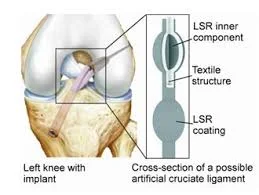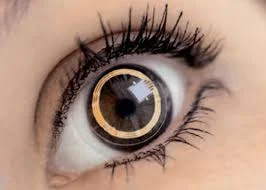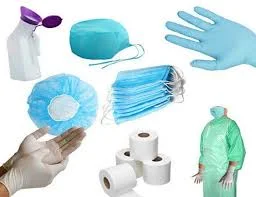Introduction
After
100 years, the total world is experiencing another pandemic disease caused by
the COVID-19 virus in 2020. Still now almost in 199 countries, this virus has
been found. Some countries are deadly suffering like the USA, Italy, Spain,
Iran, China, the UK, etc. Commonly all affected countries are sufferings from
inadequate medical safety gear. The doctors need to wear Personal Protective
Equipment (PPE), Disposal gloves, and Masks for the treatment of corona-affected
people. But unfortunately, all are at life risk due to a shortage of these
pieces of equipment. Thus, the epidemic created opportunities for textile and
garment manufacturing to meet the global demand for medical textiles for the
Bangladesh textile and garment industry. Already Bangladesh has proved that it
can grab the segment.
 |
| COVID-19 PROTECTION |
Medical Textile
Medical
textiles also known as bio-medical textiles is a combination of textile
technology and medical science. The main purpose of medical textiles is to
improve human health and well-being. The main functions of medical textiles are
healthcare, hygiene, new fiber technology, and synthetic medical textile
products. The medical textile is a fast-growing sector for its demand.
Definition of Medical Textile
The combination of textile technology and medical sciences has resulted in a new field called Medical Textiles. The new areas of application for medical textiles have been identified with the development of new fibers and manufacturing technologies for yarns and fabrics. Development in the field of textiles either natural or man-made textiles is normally aimed at how they enhance the comfort of the users. The development of medical textiles can be considered as one such development, which is really meant for converting the painful days of a patient into comfortable days.Types of fabric used in medical textile
Different
types of fabrics are used in medical textiles. But mainly four types of fabrics
are mostly used in medical textiles. These are-
1.
Woven
2.
Non-woven
3.
Braided
4.
Knitted
The properties of the medical textile are as follows-
a.
Medical textiles must be non-toxic and non-allergenic.
b.
It must be compatible with most living systems.
c.
It should be sterilized without imparting any change in physical and chemical
characteristics.
d.
If necessary, it should be versatile in its physical form like powder form,
aqueous form, film, fiber, sponges, etc.
e.
It should have enough lightness, strength, elasticity, softness, etc.
Nano-technology in medical textile
Nanotechnology
has gained tremendous popularity over the past decade. Nano-fiber-based
products, as well as nano-coated materials, are innovations in medicine so, in
our technical poster, we are going through the latest medical textile,
nano-based products due to the following features and wide applications.
Nanofibers are very attractive due to their unique properties, the high surface
area of volume ratio, the thinness of the film, the porosity of nanoscale fiber diameter structure, and their lightweight.
Nanofibres can be perforated and the pore size distribution can be wide, so
they can be considered as engineered scaffolding with wide application in the
field of tissue engineering. Some other applications such as wound dressings,
bone regeneration, and nanofibers can be carriers of various drugs at specific
sites, etc.
Smart medical fabric technology
Smart
medical textiles revolutionize healthcare. Smart fabric technology has a great
job of monitoring patients. The sensors integrated into the right of the
textile provide the least annoying way to monitor the vitreous. Patients ’body
temperature can be controlled by a fabric that can identify the wearer and the
ideal body temperature requirements. This fabric was designed by the VTT
Technical Research Center in Finland. It works by identifying the patient and
measuring the ambient temperature and then adjusting the temperature according
to the patient’s needs. This can be especially beneficial for hospital patients
who feel cold after surgery or become very hot during the operation. Users can
access lab-quality analysis using the biometric "shirt" developed by
Hexoskin. Several projects are being developed, such as clothes for measuring
heart rate, blood transfusions from textiles, and suits for children with
disabilities. New opportunities are created in the healthcare sector using new
and smart textiles for medical applications.
Medical textile product-
a.
Wound care,
b.
Bandages,
c.
Adult diapers,
d.
Aprons,
e.
artificial ligaments,
f.
Artificial lung,
g.
artificial skin,
h.
Artificial tendon,
i.
Artificial vascular grafts,
j.
Artificial cornea,
k.
Artificial heart,
l.
Artificial heart valves,
m.
Artificial joints,
n.
Artificial kidney,
o.
Baby diaper,
p.
Bandages,
q.
Contact lenses,
r.
Gauze,
s.
Gowns,
t.
Masks,
u.
Plasters,
v.
Sanitary napkins,
w.
Medical gloves,
x.
Surgical caps etc.
Human textile
Human
textiles are used to replace damaged parts of the human body. Another purpose
of this is that after repairing the body with the help of an artificial thread,
the body considers it as an external part but when the damaged part is filled
with thread made from human cells, it easily absorbs the body and does not
cause any internal problem.
Extracorporeal device
An extracorporeal device is a mechanical organ. An extracorporeal device like
artificial cleansing, artificial kidney, artificial liver, etc. Modern textile
technology plays an important role in creating an extracorporeal device.
Implantable material
This type of material is used to repair the body. It is used to remove damaged
organs by creating artificial limbs. There are two types of implantable
material.
a. Soft tissue Implant
b. Hard tissue Implant
Artificial ligaments
This medical device is used to attach the two ends of the bones. It is possible to
create Artificial Ligaments using polyester such as Man Made fibers. The usage
of the ligament varies based on the type of operation. The artificial ligaments
are normally subject to a lot of wear and tear. They also carry a risk of
septic arthritis.
 |
| ARTIFICIAL LIGAMENT |
Contact lenses
Contact
lenses are one of the most used textile technologies in modern times. Contact
Lenses change the color of the eyes and make them sweeter. It is made with
water-absorbing material.
 |
| CONTACT LENSE |
Artificial cornea
This
technology is used to remove blindness. Textile materials used in this field
should be flexible and have sufficient mechanical strength.
Artificial kidney
Hollow
viscose and polyester are used to make it. An artificial kidney is used to remove
waste from the blood.
Mechanical lung
It
removes carbon dioxide from the blood and helps in transporting clean oxygen.
It is used in hollow viscose to create.
The global market of medical textile
The
global medical textiles market was valued at USD 16,686.6 million in 2019 and
is projected to reach USD 23.3 billion at a CAGR of 4.9% by 2025, according to
a new report conducted by Grand View Research, Inc. Now the US revenue of the
medical textile industry is expected to grow at a rate of 5.3% during the
forecast period. Also, Germany's medical textiles market was valued at USD
1,852.1 million in 2019 and is projected to grow significantly over the
forecast period. And the Chinese market is anticipated to reach USD 1,547.4
million by 2025.
 |
| Medical Product |
Opportunity for Bangladesh in the field of medical textiles
Bangladesh
is the most populous country in the world with a huge requirement for
healthcare services. Consumption is increasing rapidly. Healthcare spending
from the private sector comprises over 70% of the market which is more than
comparable developing countries as well as developed countries. The Coronavirus
impact has revealed the weakness and vacuum of medical safety kits all over the
world. Here the Bangladeshi manufacturers can think over it and can take this
as an opportunity for the long run. Regular fashion brands are canceling their
orders, and at the same time, PPE demand growing sky-high all over the world. So,
factories can immediately manufacture this demand-based PPE and also can-do plans
for future business. Right now there are a few manufacturers who are supplying
medical accessories to several countries.
Medical
textile manufacturers in Bangladesh
1.
Smart Group of Industries
2.
Nasir & Sons Bangladesh
3.
E-Baik Transport Corporation
4.
Abhiyan International
5.
Sagar Trader's
These
manufacturers of Bangladesh supplying regularly their products in many
countries such as the USA, Malaysia, Pakistan, India, Lebanon, Sri Lanka, and
Nigeria. There are now many more factories like Snowtex, Urmi Group, Aman
Group, Dekko Group, etc. that are producing personal protective equipment (PPE)
to meet the current local demand.









0 Comments